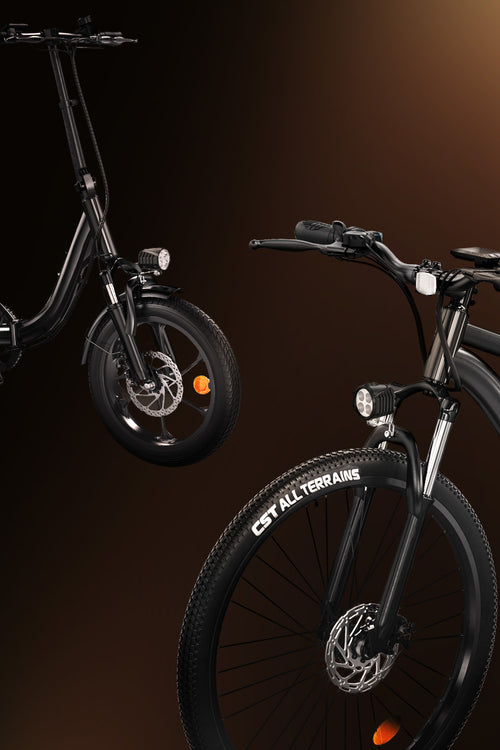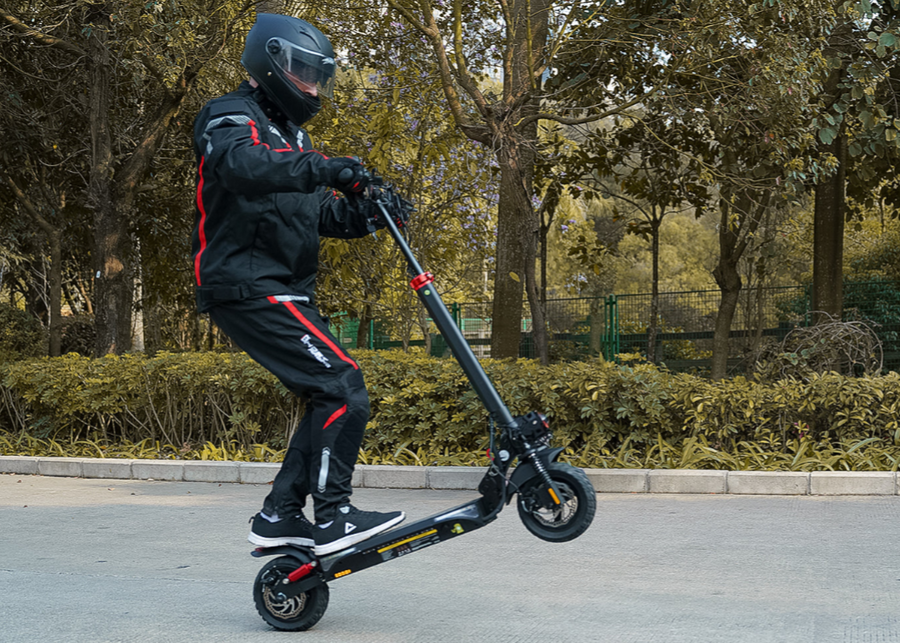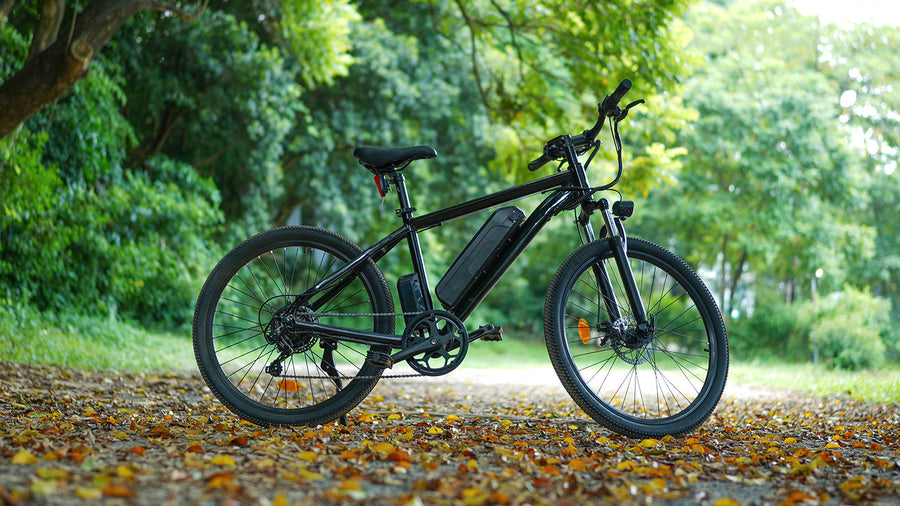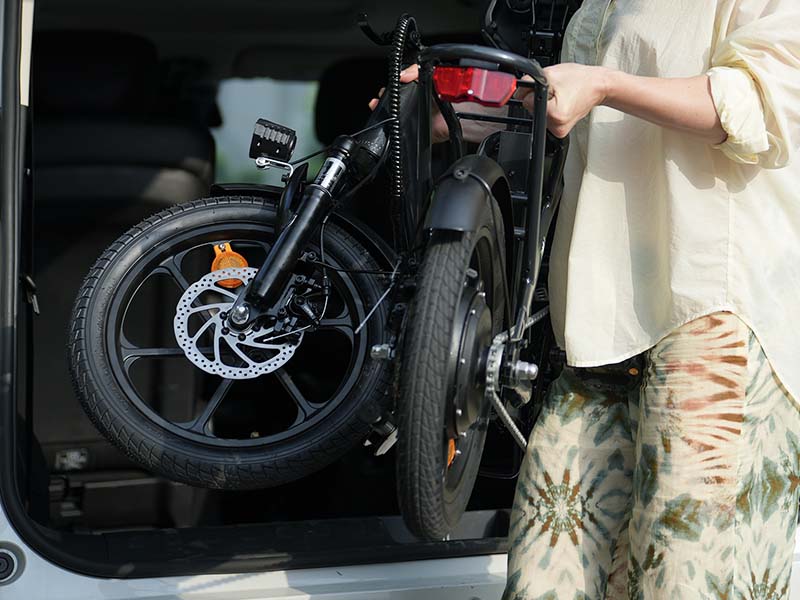
How Much Does It Cost to Charge an E-Bike? Save Money with These Tips
E-bikes are a popular, eco-friendly way to get around, but many riders wonder: how much does it cost to charge an e-bike? The good news is that charging is usually far cheaper than fueling a car or using public transport. Costs vary depending on battery size, electricity rates, and riding habits. In this guide, we break down e-bike charging costs with simple calculations, real examples, and money-saving tips so you know exactly what to expect.
Average Cost to Charge an E-Bike
Charging an e-bike is surprisingly affordable, often costing just a few pence or cents per full charge. The exact cost depends on factors like your e-bike’s battery capacity and your local electricity rate, but as a general benchmark, a standard 500Wh battery typically costs around 12–14 pence (or cents) to fully charge.
To calculate the precise cost for your e-bike, you can use a simple formula: convert your battery’s watt-hours (Wh) to kilowatt-hours by dividing by 1,000, then multiply that number by your local electricity price per kWh. For example, a 500Wh battery ÷ 1,000 = 0.5 kWh; if electricity costs 25p per kWh, a full charge would cost 0.5 × 25p = 12.5p.
This calculation shows just how cost-effective e-bikes are, making them not only an eco-friendly choice but also a budget-friendly alternative to cars or public transport. Understanding your charging costs can help you plan rides, manage electricity bills, and get the most value from your e-bike.
Key Factors That Determine E-Bike Charging Cost
Charging costs are one of the core expenses of owning and operating an e-bike, but the actual cost can vary significantly depending on several key factors. Understanding these factors can help e-bike riders estimate their monthly expenses and make smarter choices to reduce charging costs.
1. Charging Frequency
How often you charge your e-bike has a direct impact on costs. Riders who commute long distances daily, use high-assist modes, or tackle steep inclines will naturally charge more frequently, increasing electricity expenses. Conversely, riding on flat terrain or using lower assist levels can extend battery life, reduce charging frequency, and lower costs over time.
2. Electricity Price
The cost of electricity in your area is a major factor in determining how much you pay per charge. Electricity is typically measured in kilowatt-hours (kWh). For example, charging a 500Wh battery at 20p/kWh will cost almost twice as much as charging the same battery at 10p/kWh. Knowing your local electricity rates helps you calculate precise charging costs.
3. Charger Efficiency
No e-bike charger is 100% efficient. Some energy is always lost during charging due to heat and internal resistance. Modern, high-efficiency chargers can reach 85–90% efficiency, whereas older or low-quality chargers may operate at only 70–80%. A less efficient charger consumes more electricity to fully charge the same battery, increasing your overall cost.
4. Ambient Temperature
Extreme temperatures can reduce battery efficiency. High heat in summer or freezing conditions in winter can cause batteries to drain faster or charge less effectively. This inefficiency often forces more frequent charging to maintain the desired range, adding to your energy costs.
5. Battery Capacity
The larger the battery, the more energy it requires for a full charge. For example, a 500Wh battery will cost more to charge than a 300Wh battery under the same electricity rates. Understanding your battery size is crucial to estimating per-charge expenses accurately.
6. Battery Health
As batteries age, their maximum capacity declines, reducing the distance you can travel on a single charge. To maintain the same range, older batteries must be charged more frequently, which increases total electricity consumption and charging costs over time.
How to Calculate E-Bike Charging Cost
Calculating the cost to charge your e-bike is simpler than it sounds. By knowing your battery’s capacity and your electricity rate, you can easily estimate how much each full charge will cost. Follow these steps to get an accurate calculation.
Step 1: Find Your Battery’s Capacity
Check your e-bike battery or charger for its capacity, usually listed in Watt-hours (Wh). Common e-bike batteries range between 400Wh and 700Wh, with 500Wh being typical.
Step 2: Convert Watt-hours (Wh) to Kilowatt-hours (kWh)
Electricity is billed in kilowatt-hours, so you need to convert your battery capacity:
kWh=Wh1,000\text{kWh} = \frac{\text{Wh}}{1,000}kWh=1,000Wh
Example:
A 500Wh battery → 500÷1,000=0.5 kWh500 \div 1,000 = 0.5 \text{ kWh}500÷1,000=0.5 kWh
Step 3: Account for Charging Inefficiency
Not all the energy from the charger reaches your battery—some is lost as heat. Multiply your kWh by 1.25 to include these losses:
0.5 kWh×1.25=0.625 kWh0.5 \text{ kWh} \times 1.25 = 0.625 \text{ kWh}0.5 kWh×1.25=0.625 kWh
Step 4: Calculate the Charging Cost
Check your electricity provider’s rate per kWh. Multiply the adjusted kWh from Step 3 by this rate to estimate the cost of a full charge:
Example:
If your electricity rate is £0.35 per kWh:
0.625 kWh×£0.35=£0.220.625 \text{ kWh} \times £0.35 = £0.220.625 kWh×£0.35=£0.22
So, a full charge for a 500Wh e-bike battery would cost just 22 pence.
How to Reduce Your E-Bike Charging Costs
Even though charging an e-bike is already inexpensive, there are ways to reduce costs further. By optimising charging habits, using off-peak electricity, and tapping into renewable energy, you can save money while protecting your battery.
1. Optimise Charging Habits
Charge after short rides instead of waiting for a full drain. Charging at moderate indoor temperatures is more efficient, and if you have time-of-use electricity rates, avoid peak hours to lower costs.
2. Reduce Unnecessary Power Use
Always unplug the charger after charging and turn off your e-bike’s power and auxiliary systems when not in use. This prevents energy waste and unnecessary costs.
3. Use Free or Public Charging Points
Charge at work, shopping malls, gyms, or other establishments that offer free outlets. Platforms like Zap-Map can help locate nearby free charging stations.
4. Take Advantage of Off-Peak Electricity
Charge during off-peak hours with time-of-use tariffs or smart timers. You can also use portable battery storage devices to store low-cost electricity for later charging.
5. Use Renewable Energy
If possible, install solar panels with battery storage to power your e-bike. This can significantly reduce or even eliminate charging costs over time.
How Long Does It Take to Charge an Electric Bike?
The time it takes to fully charge an electric bike depends on several key factors: the type of battery, its capacity, and the charger type provided.
As a general guideline:
-
Smaller amp chargers (like a 2-amp travel charger) will take longer to charge a battery than higher amp chargers.
-
Larger batteries naturally require more time to reach a full charge compared to smaller-capacity units.
Depending on the battery and charger combination, a full charge typically takes between 4 and 6 hours. While this is longer than filling a tank with petrol or diesel, the convenience of charging at home means you can power up your e-bike overnight or during downtime, so it’s ready whenever you need it.
Conclusion
Charging an e-bike is inexpensive, usually just a few cents to a couple of dollars per full charge, depending on battery size and electricity rates. Understanding how much it costs to charge an e bike helps you budget effectively and compare it to other transport options. By charging smartly and using off-peak or renewable energy, you can keep costs low while enjoying a convenient, eco-friendly ride.
FAQs
How often do you have to charge an e-bike?
Most iScooter e-bikes need a full charge every 40–60 miles, depending on the model and riding conditions. Daily commuters may charge every 1–2 days, while casual riders may only need to charge once a week
How long do electric bikes last?
iScooter e-bikes are built for durability, with batteries typically lasting 3–5 years and motors designed to handle tens of thousands of miles with proper care and regular maintenance.
Does charging an ebike use a lot of electricity?
Not at all. Charging an iScooter e-bike uses very little electricity—usually around £0.08–£0.15 per full charge, depending on your local energy rates.
What is the monthly electric bill for an electric bike?
For an average rider, charging an iScooter e-bike daily costs around £3–£5 per month, even with frequent use. This is far more economical than running a car or taking public transport regularly.
iScooter E Scooter Collections:
Electric Scooter | Kids Electric Scooter | Electric Scooter for Adults | Electric Scooter with Seat | Off-Road Electric Scooter | Foldable Electric Scooter | Girls Electric Scooter | 1000W Electric Scooter | 2000W Electric Scooter | Boys Electric Scooter | Dual Motor Electric Scooter | Big Electric Scooter | Electric Scooter with Suspension | Lightweight Electric Scooter | Commuter E-Scooters | 3 Wheel Electric Scooter
Show more ▼iScooter E Bike Collections:
Foldable Electric Bike | Affordable Cheap Electric Bike | Electric Bike for Adults | Electric Motor Bikes | Trek Electric Bike | Fastest Electric Bike | Electric Road Bike | Full Suspension Electric Mountain Bike | Giant Electric Bike | Womens Ladies Electric Bike | Mens Electric Bike | Electric Bike with Throttle | Electric Gravel Bike | Electric Mountain Bike UK | Fat Tyre Electric Bike | Electric Hybrid Bike | Electric Motorised Bike | Electric Push Bike | 1000W Electric Bike | Cool Electric Bikes | Electric Off Road Bike | Pedal Assist Electric Bike | Good Electric Bikes | Small Electric Bike | Trek Electric Mountain Bike | 2000W Electric Bike | Full Suspension Electric Bike | Mini Electric Bike | Road Legal Electric Bike | Step Through Electric Bike
Show more ▼👍 Buying Guide | 🚴♂️ Riding Guide
📋 Feature Guide | ❓ Common problem
Product category
Electric Scooter
Cheap Electric Scooters for Adults | Fastest Electric Scooter | Kids Electric Scooter | Mini Electric Scooter































































Article tags :
Leave us a message